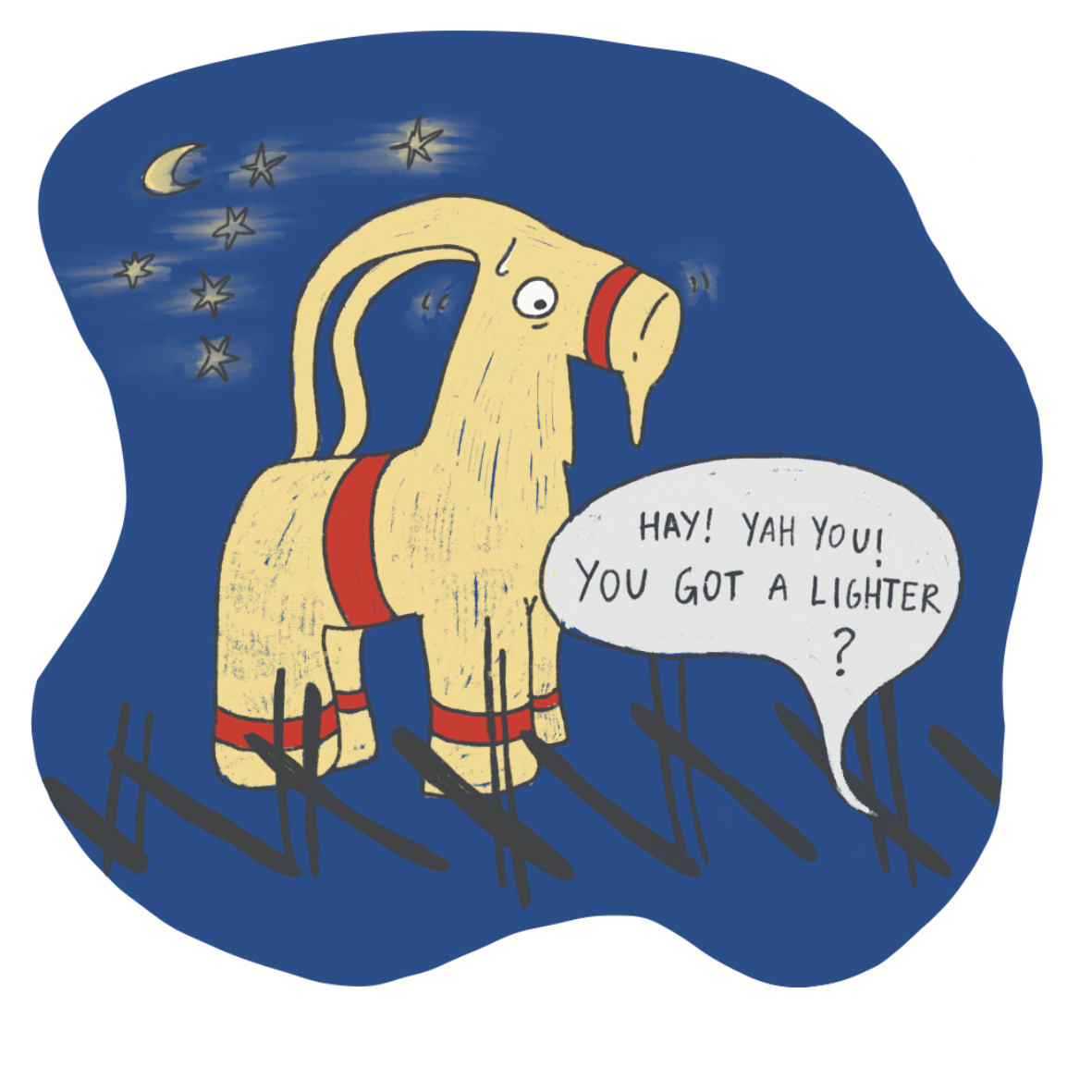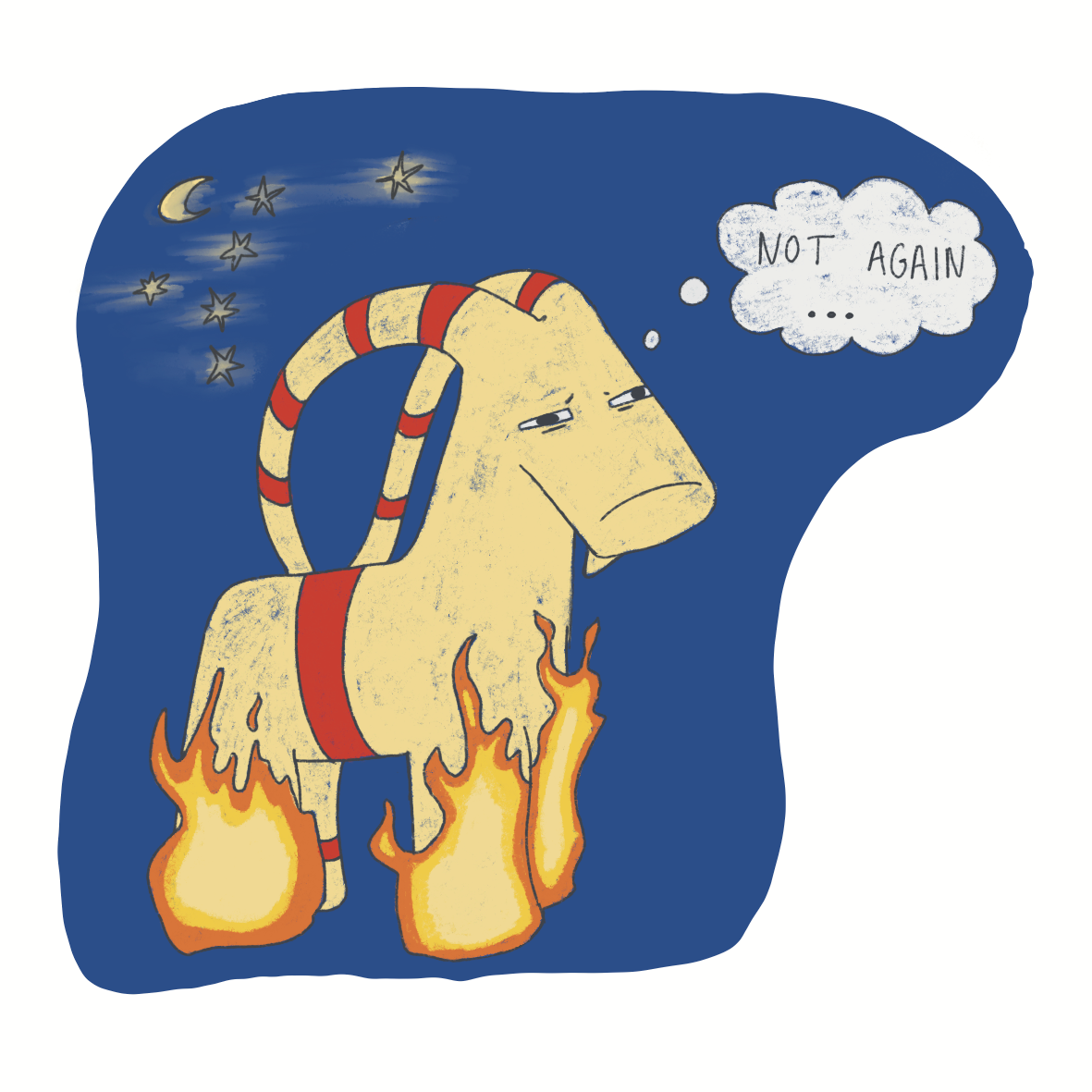The Swedish Tradition of Pyromania

Gunnar Åkerlind - Authorgunnar.åkerlind@osqledaren.se

Rebecka Ingram - Illustratorrebecka.ingram@osqledaren.se
Almost every year, a certain peculiar event takes place in the city of Gävle. A few hours north of Stockholm one finds a medium-sized Swedish city with a university, industry and anything else you would expect. However in terms of fame, neither institutions nor commerce can compete with Gävle’s signature landmark - Gävlebocken.
This massive goat made of straw is built anew yearly for christmas and placed on Castle Square for display. Yet by christmas eve, the goat rarely remains intact. Nearly every year since the first construction in 1966, the goat has been set aflame and as time has passed, this criminal act has become tradition.

The two years following the first goat (and fire) were void of vandalism. The first act of arson might have seemed like a freak occurrence, a terrible deed by some madman. But then, in 1969, it burned once again. The years following would be defined by destruction. From 1966 to now, it has been destroyed 38 times. While arson has become a well known tradition, many variations of vandalism have taken place. In 1976 a student rammed the goat with a Volvo Amazon. It was in 1973 stolen by a man who then placed it in his backyard (he later got sentenced to two years in prison for the theft).
Along with the tradition growing to be more established, security has increased. Tall fences, webcams, security guards with K9-units. Even going as far as soaking the goat in flame retardant or water. All examples of attempts at protecting the goat, from what now seems like destiny. But as history shows, few times have the efforts been successful.

In 2017, the goat survived. The year after it survived again. For the first time in 2019, the goat survived its third year in row, breaking the previous record of two. To the demise of all who had come to view the burning as the norm, it survived a fourth year as well. Had half a century of arson come to an end? Had the guards and fences become too much? As Christmas approached in 2021, excitement hung in the air. Would some brave (and maybe a little foolish) vandal take the challenge? On the 17th of December, the tension reached its climax and the goat once again stood aflame. A 40-year old man was arrested and the time of peace had come to an end.
More than fifty years since the first fire, one needs to ask the question: Has the crime become accepted as tradition?
The four year long streak of surviving goats has been broken. The unnamed 40-year-old soon stands trial and punishment awaits him, provided the court finds him guilty. In that matter we, the people, have no say. But as a man becomes legend, will he be viewed through the lens of the law or shall we judge him as a righteous warrior, standing up for tradition and the legacy of all who stood before him?

Publicerad: 2022-01-05


